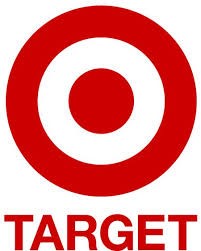
How to Create A Brand Identity That Sells
How do you stand out in a saturated sea of competing brands? Your brand identity is what separates you from the rest. It shows your audience who you are, instead of just telling them. These tips will help you establish your brand’s identity.
There are pros and cons with how businesses operate these days. One of the biggest pros that can also be a con is that everybody can run a business online. If you have a decent enough amount of knowledge on a subject, the odds are that you can get a business up and running in a short amount of time. However, the key to longevity is building up a consistent and recognizable brand. Some of the most successful and iconic brands, like Apple and Coca-Cola have mastered the use of branding to attract a loyal fan base. Their use of icons and symbols helps set them apart. What can you learn from these brands to create your own brand identity that survives the test of time?
Give your audience the full picture.
Your brand identity is extra-important when you’re trying to stand out online and elsewhere. Many consider the logo that you choose to be the face of your company, but everything else that goes into your branding could arguably be your company’s face as well.
Think about it. Everything from your color palette, to the voice you use to write copy, to the way that you choose to advertise is going to be someone’s first impression of you. Ideally, that someone would be a lead that goes through your sales funnel and follows through. So, why not make sure that your first impression is polished and professional. But, speaking of logos…
It’s more than a logo.
A good logo will get you far, but you can’t rely on it to tell your brand’s story. Your logo is, however, almost like the face of your company. Think about iconic logos that you’ve seen before. Amazon’s logo, for example, has a smile hidden within it to allow customers to associate Amazon with happiness. This logo is easily recognizable, along with the brand’s assistant tool, Alexa.

Colors also tie into the visual aspects of branding. For example, the orange in Amazon’s logo (namely the smile itself) is supposed to represent friendliness and playfulness. Their serif font ties the package together with one of their gift-wrap bows. This all culminates into Amazon’s overall goal of appearing approachable, reliable, and user-friendly.
Your logo will likely be the first piece to your visual branding puzzle. Consider the following when you get started:
- Color helps give off psychological effects. Target’s bright red invites a younger and more passionate crowd. This is seen within their avid fanbase.

- Fonts also represent your brand’s personality. Serif fonts represent trustworthiness, as seen in the Amazon example above. Sans serif literally means “without serif.” This helps you appear more modernized. Cursive fonts are very whimsical in nature and help if you are trying to appear as youthful.
- Shapes also determine the demeanor of your brand. Stiff lines are great for financial advisors, as they represent efficiency. However, don’t make yourself seem too stiff! You still want your audience to know you. Circles evoke feelings of togetherness. This would be good for a coach, because you would already appear to be approachable.
Target also uses shapes and fonts to their advantage. Their sans serif font and circle logo brand them as whimsical and playful, which works well with their dog icon that they use in other forms of marketing. Next time you’re online shopping, pay attention to the brand’s logo. See what techniques they used to tell their story quickly to make a good first impression.
We can help you create the perfect logo for your business. Together, we’ll go over everything that makes your brand stand out and conceptualize it into a tangible logo. This way, you won’t have to sit through the process of trying out many different options before one sticks.
Getting down to business
Now that you understand the basics, it’s time to create an actionable plan. The first thing that we do is create a blueprint for you. Mapping out your ideas and create a branding kit. First, we do a research of your customer personas. Knowing who your brand will or already appeals to helps you create items like your logo.
Then, it’s time to create the blueprint itself. Lay out everything that we know about your brand. This includes the emotions that you want to evoke as well as the stories you want to tell. Referring to your brand’s mission helps here. The whole thing should encompass your overall goal as well as core values. We help you refine these values and create branding that sells.
Finally, it’s time to put your brand’s voice to use. Think about things like tonality. How serious do you need to be for your specific services or products? Do you need to get a little more sentimental? This is another place where understanding your demographic is important.
When we work together, you’ll be able to get it right the first time. Eliminating the trial and error process puts you ahead of the learning curve. Working with us can get you several steps ahead of the game.
Finally, remember…
Originality is key! You don’t want to copy your competitors. We’ll make sure your designs are original as possible. Not only is this the morally correct thing to do, but, you won’t be able to stand out if you look just like everybody else.
As long as you’re consistent with all of your branding, leads will be able to see that you’re a reliable voice in your field. Now that you know all the steps to create your branding kits, it’s time to put them to use! Your homework is to begin outlining your ideas, and complete our New Client Questionnaire so that we can see if we are a good fit. We can’t wait to help you bring your visions to life!